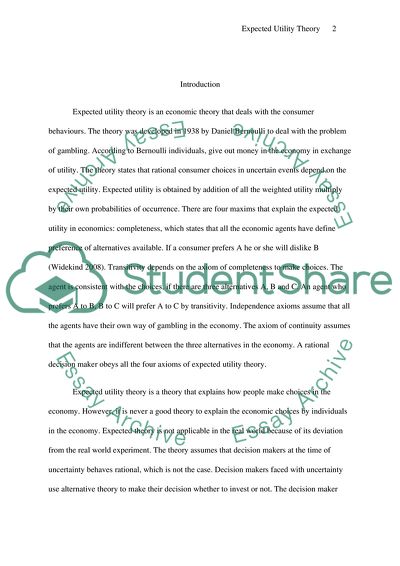Cite this document
(Expected Utility Theory Case Study Example | Topics and Well Written Essays - 2250 words - 2, n.d.)
Expected Utility Theory Case Study Example | Topics and Well Written Essays - 2250 words - 2. https://studentshare.org/macro-microeconomics/1855906-is-expected-utility-a-good-theory-for-explaining-how-people-make-choices
Expected Utility Theory Case Study Example | Topics and Well Written Essays - 2250 words - 2. https://studentshare.org/macro-microeconomics/1855906-is-expected-utility-a-good-theory-for-explaining-how-people-make-choices
(Expected Utility Theory Case Study Example | Topics and Well Written Essays - 2250 Words - 2)
Expected Utility Theory Case Study Example | Topics and Well Written Essays - 2250 Words - 2. https://studentshare.org/macro-microeconomics/1855906-is-expected-utility-a-good-theory-for-explaining-how-people-make-choices.
Expected Utility Theory Case Study Example | Topics and Well Written Essays - 2250 Words - 2. https://studentshare.org/macro-microeconomics/1855906-is-expected-utility-a-good-theory-for-explaining-how-people-make-choices.
“Expected Utility Theory Case Study Example | Topics and Well Written Essays - 2250 Words - 2”. https://studentshare.org/macro-microeconomics/1855906-is-expected-utility-a-good-theory-for-explaining-how-people-make-choices.


